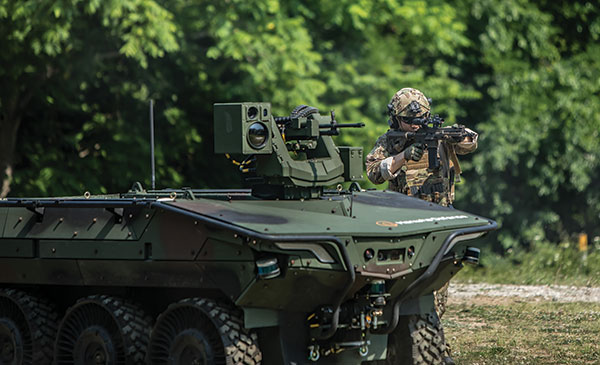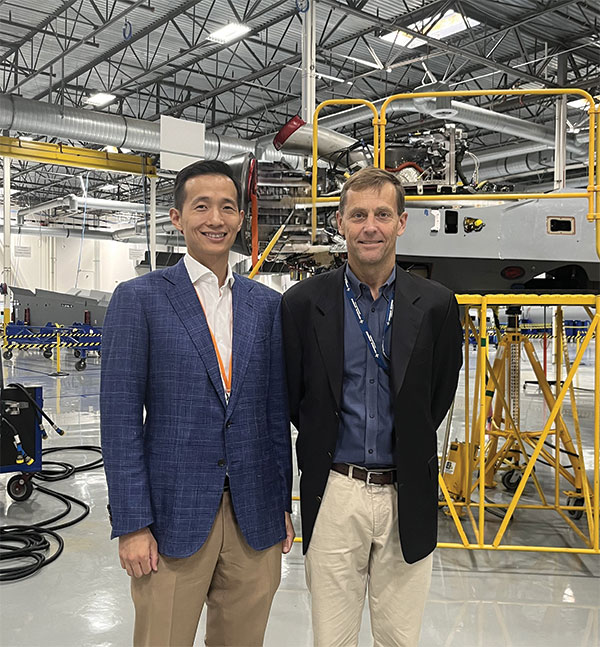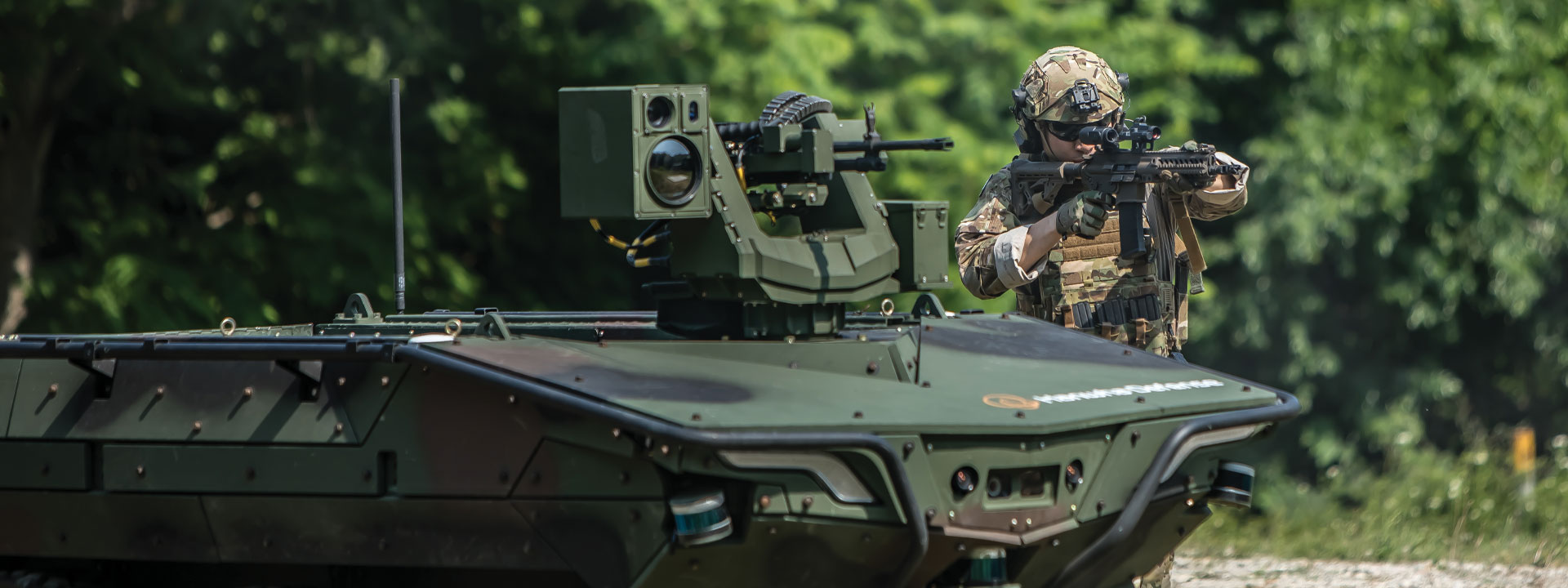in Story & News
Hanwha Aerospace × Milrem Robotics
Hanwha Aerospace × GA-ASI
Building Robust Unmanned
Battlefield Solutions
Across Land, Sea, and Air
Through Global Partnerships
Hanwha Aerospace, a leading K-defense company, is leveraging its cutting-edge technological capabilities to strengthen its presence across the air, space, maritime, and defense sectors. In recent years, the company has focused on unmanned defense systems, bolstering its position in export markets and advancing into global arenas. Hanwha is expanding not only in ground-based unmanned systems (i.e., UGV) but also in the UAV market through partnerships with global players such as the United States’ GA-ASI and Estonia’s Milrem Robotics.
Photo Credit Hanwha Aerospace

Hanwha Aerospace’s multipurpose unmanned ground vehicle (UGV), the Arion-SMET
Partnership with Milrem Robotics to Develop the World’s Most Advanced Unmanned Combat Vehicle
In September 2023, Hanwha Aerospace signed a contract with the US Department of Defense on the Foreign Comparative Testing (FCT) of the Arion-SMET (Autonomous and Robotic systems for Intelligence Off-road Navigation – SMET), a homegrown UGV by Hanwha, and successfully completed the program’s test by December of that year.
Developed through Korea’s first civil-military technological collaboration in 2016-2019, the Arion-SMET is a multipurpose infantry support UGV capable of transporting supplies, evacuating casualties, conducting surveillance and reconnaissance, remote scouting, and close-quarters combat. Within the 1.1-kilometer boundary, the Arion-SMET is capable of remote, follow-me, and semi-autonomous driving. Furthermore, it offers an autonomous return-to-base function in case communications are lost. Having already proven its capabilities in the global UGV market, the Arion-SMET is now poised to take the next leap forward.
At IDEX 2025—the largest international defense exhibition in the Middle East—Hanwha Aerospace signed an MOU with Milrem Robotics, Europe’s leading UGV company. Based in Estonia, Milrem supplies tracked UGVs to 16 countries, including the US, UK, and France, and is leading the global standardization of UGV technology. The MOU outlines plans to co-develop the Tracked-Robotic Combat Vehicle (T-RCV) and expand strategic partnerships for global market entry.
Building on this foundation, Hanwha aims to enter both domestic and international UGV markets by upgrading its existing UGV line-ups—i.e., the wheeled “Arion-SMET” and its next-generation model, “GRUNT”.
First Steps a UAV Systems Business with GA-ASI
Hanwha Aerospace has also joined forces with GA-ASI, a US-based specialist in unmanned aerial systems. In April, the two companies agreed to co-develop the short take-off and landing (STOL) UAV, Gray Eagle-STOL (GE-STOL), establishing an end-to-end partnership that covers planning, design, development, system integration, production, operations, and sales.
GA-ASI is a globally recognized developer of fixed-wing UAVs, known for sophisticated platforms such as the MQ-1 Predator and MQ-9 Reaper. It supplies UAVs to NATO members and key allies including the UK, Japan, and Australia. The jointly developed GE-STOL, with the maximum take-off distance being just a few hundred meters, is designed to be operated in limited conditions, such as on short runways, aircraft carrier’s flight decks, and unprepared terrain. With a payload capacity of 1.6 tons, it can be configured for various missions including reconnaissance and strike operations.
The GE-STOL is rapidly drawing attention. In November 2024, the Republic of Korea Navy successfully launched the UAV from the Dokdo-class amphibious assault ship during a field test. There are projections on a substantial demand. GA-ASI estimates that countries currently operating its UAV systems will require more than 600 GE-STOL units over the next decade, which translates into approximately KRW 15 trillion in export volume, even before factoring in follow-on support and system upgrades. Should the GE-STOL project evolve into a broader Hanwha–GA corporate partnership, the scale of investment is likely to increase further. With a maiden flight scheduled for early 2027, the two collaborating companies plan to pursue projects in the US, Middle East, Asia, and Europe, while also contributing to strengthened US-Korea defense cooperation through sharing common unmanned platform capabilities.

Commemorative photo of Hanwha Vice Chairman Dong-kwan Kim touring the UAV production facility during his visit to GA-ASI headquarters in San Diego, California in August 2024, with GA-ASI CEO Linden Blue.
Toward the Globalization of K-Defense
Hanwha Aerospace is laying the foundation for a robust domestic unmanned systems ecosystem by strengthening R&D and production infrastructure, securing talent, and identifying new suppliers of components and materials. With over 20 years of experience in defense robotics, the company aims to establish a full UGV lineup by 2028 and enter the global UAV market—projected to reach KRW 50 trillion—by 2040. By collaborating with global partners with world-class capabilities, Hanwha Aerospace is spearheading the globalization of K-defense.
